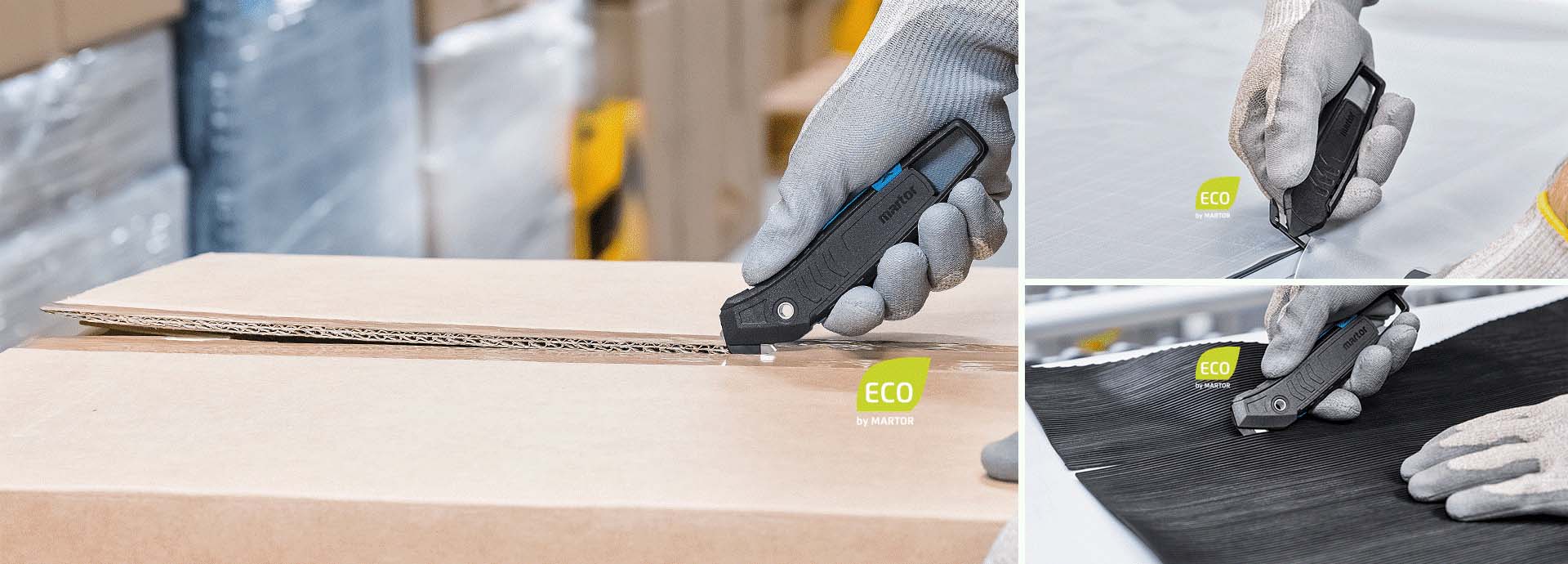Blades play a pivotal role in packaging and warehouse industries, especially in the form of box cutters. These sharp tools streamline the packaging process, ensuring efficient box assembly and sealing. Their precision facilitates clean, uniform cuts on various materials, enhancing packaging integrity. In warehouses, box cutters contribute to swift and accurate product handling, promoting operational efficiency. With their versatility and ease of use, blades are indispensable tools, promoting productivity and safety across packaging and warehouse environments.
Types of Industrial Blades
- Hook Blades:
- Known for their curved design, hook blades are ideal for cutting materials like carpet, linoleum, and fabrics.
- Features a hook shape to prevent damage to underlying surfaces during cutting.
- Long Blades:
- Long blades are characterized by their extended length, making them suitable for cutting through large or thick materials.
- Often used in applications where precision and straight cuts are crucial.
- Scalpel Blades:
- Resembling the precision of a surgeon’s scalpel, these blades are perfect for intricate and delicate cutting tasks.
- Commonly used in industries such as electronics, medical devices, and arts and crafts.
- Ceramic Blades:
- Known for their hardness and resistance to wear, ceramic blades excel in cutting tasks involving abrasive materials.
- Ideal for applications where precision and durability are paramount.
- Trapezoid Blades:
- Featuring a trapezoidal shape, these blades are versatile and suitable for a variety of cutting tasks.
- Often used in construction, packaging, and general industrial applications.
Tips for Operational Managers
- Application Assessment: Understand the specific requirements of your cutting tasks to choose the most suitable blade type.
- Material Compatibility: Consider the material you’ll be cutting and choose a blade that offers the right balance of sharpness and durability.
- Safety Features: Prioritize blades with safety features such as retractable options or blade guards to minimize the risk of accidents.
- Blade Longevity: Evaluate the expected lifespan of the blade and factor in the costs and time associated with replacements.
Benefits of Using Industrial Blades
- Precision: Industrial blades offer unparalleled precision, ensuring clean and accurate cuts in various materials.
- Efficiency: With the right blade for the job, operational efficiency is significantly improved, leading to time and cost savings.
- Versatility: Different blade types cater to a wide range of applications, providing versatility in industrial settings.
- Durability: Industrial blades, especially those made from high-quality materials like ceramic, boast exceptional durability and resistance to wear.
- Safety: Blades with safety features contribute to a safer working environment, reducing the risk of injuries.
The Crucial Role of Blades in Australia’s Packaging Industry
- Box Cutter Essentials: At the heart of packaging operations lies the box cutter, a fundamental tool equipped with a sharp blade. Its primary function is to streamline the intricate process of box assembly and sealing. The efficiency of this process significantly relies on the quality and sharpness of the blade, impacting the overall pace and accuracy of packaging tasks.
- Speeding Up Workflow: Blades in box cutters facilitate swift and uniform cuts, allowing for seamless opening of packaging materials. This efficiency is critical in meeting tight deadlines and ensuring timely delivery of products to meet consumer demands. The ability to expedite workflow is a key advantage that blades bring to the packaging industry.
- Ensuring Product Integrity: The packaging industry places a premium on product integrity, and the role of blades is pivotal in upholding this standard. Precise cuts from sharp blades contribute to the neat and professional presentation of packages, reflecting positively on the brand image and customer satisfaction.
- Versatility in Task Execution: Blades are not limited to box cutting; they find utility in various packaging tasks. From cutting strapping materials to customizing box sizes, blades provide versatility, enabling workers to adapt to different packaging requirements efficiently.
- Operational Safety: While blades enhance operational speed, their design also considers safety. Many modern box cutters feature retractable or guarded blades, minimizing the risk of workplace injuries. Prioritizing safety contributes to a positive work environment and ensures compliance with occupational health and safety standards.
- Investing in Quality: Given the critical role blades play in the packaging process, investing in high-quality blades becomes imperative. Dependable blades not only enhance efficiency but also contribute to cost-effectiveness by reducing the need for frequent replacements.
Final Words
For a reliable source of high-quality industrial blades and safety cutting tools, consider Martor Australia. Offering a diverse range of blades designed for precision and safety, Martor stands as a trusted provider in the industry. Explore their online store to find the perfect cutting tools for your operational needs.
As operational managers navigate the world of industrial blades, understanding the types available and their respective benefits is crucial for optimal performance. By considering the application, material compatibility, safety features, and longevity, managers can make informed decisions that positively impact efficiency and workplace safety. Explore the offerings at Martor Australia to discover cutting-edge solutions for your industrial cutting needs.










